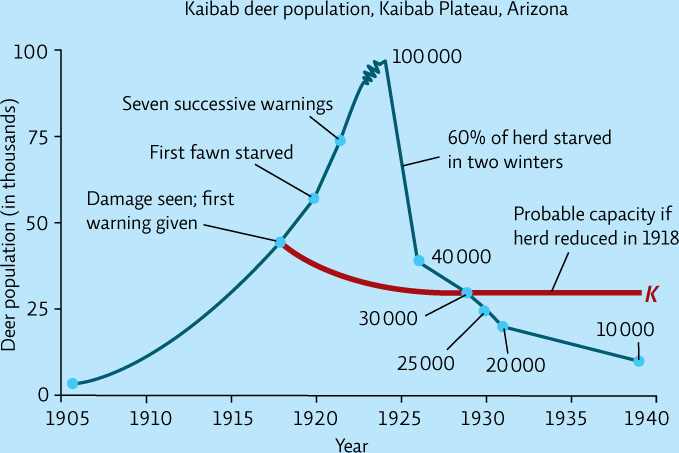7.7 Analyzing The Science
The following graph shows the numbers of Kaibab deer on the isolated Kaibab Plateau in northern Arizona. President Theodore Roosevelt declared it a National Game Preserve in 1906 and predator removal was encouraged to protect the deer. Between 1907 and 1917, more than 600 mountain lions were removed; 200 more were removed over the next 20 years. Wolves were exterminated by 1926 and more than 7000 coyotes and 500 bobcats were also removed. The deer population increased, and by 1915 there was significant damage to the grasses, shrubs, and trees that were being eaten by the deer.

127
INTERPRETATION
Question 7.13
With the initial level of predators, what was the probable carrying capacity (K) of the Kaibab Plateau for deer at the start of this story?
Question 7.14
Once the population had passed its probable K, would it be able to sustain itself at the higher numbers? Explain your answer.
Question 7.15
In what 2 to 3 year period did the deer population have the highest reproductive growth rate?
ADVANCE YOUR THINKING
Question 7.16
Explain the factors—critical, resistance, density-dependent, density independent—that accounted for the changes in population numbers for the deer in 1905, 1915, and 1930.
Question 7.17
Decide if Kaibab deer behaved like an r-selected species or a K-selected species, and justify your answer.
Question 7.18
Compare the probable look of the habitat of the Kaibab Plateau (295 000 hectares, 2745 metres elevation) in 1905 with the way it probably looked in 1935 after 30 years of damage.